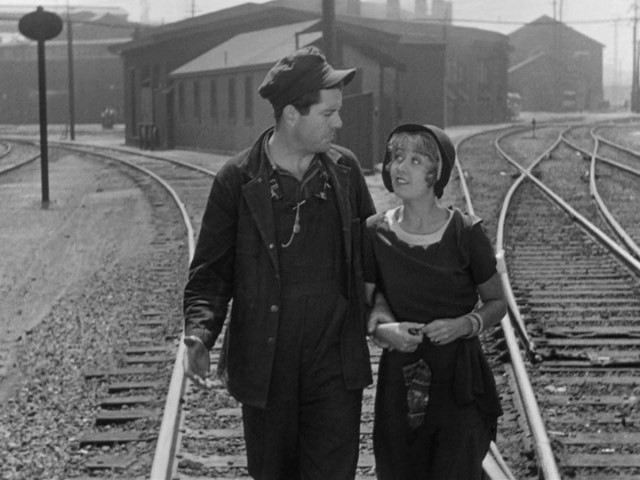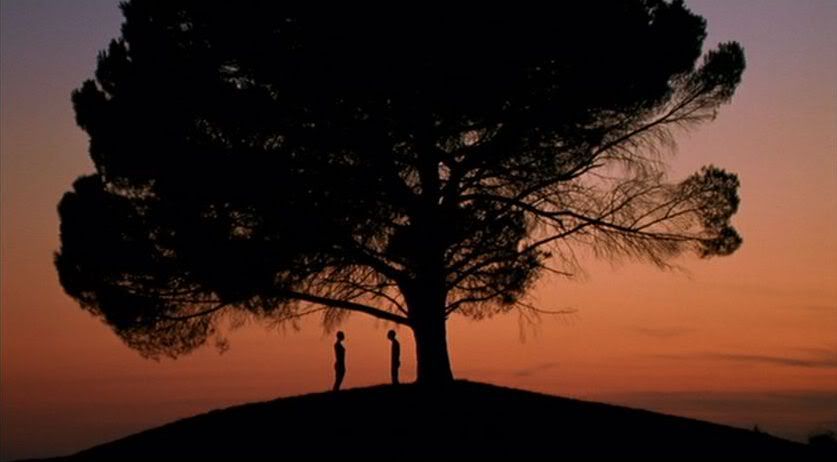
One of the hallmarks of 80's cinema was the well-meaning drama scolding South Africa about what terrible and unjust meanies they were with their bad apartheid. As if the US had never fostered racially-based injustice. It was a good thing we had limited communications with the old South Africa, or they would probably have jumped up and punched us in the nose for lecturing them.
Now that the new South Africa is almost 20 years old, it does seem to make sense to assess what has been happening there. (I had to look this up, but although Mandela was released in 1990, he did not become president until 1994.)
Disgrace (2008) has, at least, a partially South African perspective, although the filmmakers are Australian and the star is American. It is a very dark, perhaps pessimistic work. I choose to read it as a metaphor for the position of minority whites in the new South Africa.
Malkovich is morally compromised (he sexually abuses a black student--sort of colonialism in
minature), and retreats from the city to land he owns in the country, to become, literally, a Boer, the Dutch word for farmer which is the black South African word for "white" or specifically "white oppressor." He is at the mercy of his black neighbor,
Petrus, who begins as a tenant and eventually becomes the owner. His daughter Lucy, is sexually assaulted by three black ruffians while he is helplessly locked in the bathroom (and briefly set on fire). She will not report the assault, and
Petrus turns out to be the patron of the principal villain. Lucy even decides to go ahead and bear the child conceived in the assault. The only useful work
Malkovich can find is to help the local shelter euthanize unwanted animals. As
Malkovich holds one poor dog as its life ebbs away, one can't help wondering if he doesn't seem himself fading away and becoming nothing in this South Africa.
It seems there is nothing left for the whites but acquiescence, due to their
pre-existing guilt. I have read various places that the film ends on a note of tentative hope, but I don't see it. It seems to be muddling-through, South-Africa style.
The
filmmaking is similarly bleak. South Africa looks bleached and parched, the countryside a barely habitable desert, the city a collection of walled-in spaces.
Malkovich's accent is very insecure, but his arrogance and lack of empathy is solidly in place. As usual he asks neither for pity nor sympathy. Is there an American star who cares less about whether the audience likes him? That attitude pays off at the end, since one can grudgingly admire his fortitude at carrying on in spite of his trials.
Disgrace is a hard movie to watch It is uncompromising, unsentimental, unsparing to its characters and its audience. But it is never dull and it is often rewarding.
Invictus (2009) comes off as a feel-good picture by contrast. Much of it is of the "sports overcomes racism" vein, like
Remember The Titans and going back all the way to
The Jackie Robinson Story. It frequently takes time to repeat its ideas (Mandela is a healer--he wants to preserve white dignity to ensure their participation in the new South Africa) and to congratulate itself for its noble mindedness. I am left with these questions as I watch it?
1. Why Clint Eastwood to direct and why was Eastwood's work so anonymous? On the plus side, it omitted some of the
langours of Eastwood's personal projects, but it never gave much scope to the acting, which is Eastwood's hallmark. There were really only two pieces of virtuoso
filmmaking, and I won
 der
der to what extent they were scripted. One comes in the sequence when Damon's rugby team visits the prison Mandela inhabited for more than 20 years, and we see the ghosts of the former inmates. This is particularly moving as it is coupled with the words of "
Invictus," a poem for which I have a soft spot. (I have recommended it to many students, especially athletes, as a credo, and it is never not been embraced by them.)
The other striking sequence is the one picture here, in which the predominantly white players conduct a rugby clinic in a township, where the game is not familiar, and we literally see the spirit of play transcend other human boundaries. There was nothing new, but it was
exhilarating all the same, especially in contrast with the noble talk.
2. Why Matt Damon if he was not going to be given a character to play? If wonder if the plan wasn't, "Hey, there's no character here! No problem--we'll get a well-liked American star and nobody will notice!"
3. If South Africa has a bright future, why does the film look blasted and whitened like a post-apocalyptic film?
4. Why cast Leleti Kuhmalo (the original
Sarafina on stage and screen) and not give her a chance to shine? It was lovely to see her again, and she is lit from within, like she swallowed a small star, but it is way past due to feature her in another film.
5. Why the whole subplot about integrating the white and black bodyguard teams? The problem was stated in seconds, and then they kept repeating the trope over and over. It never even really resolved. It was all okay at the end, but not a real resolution.
6. Why no twists or turns after the first 45 minutes or so, when the move to abolish white rugby is turned back by Mandela and he sets the course to win the World Cup? We know they're going to win, or there is no movie, but they seemed to win by becoming the Little Rugby Team That Could.
7. Why not an African music score? Somewhere after the one-hour mark we got a little taste of African music, but up until then, we had the standard generic Hollywood movie cues. (Hint--the first composer listed is named Kyle Eastwood. I don't mind hiring family--it's good to work with people you are familiar with, it saves time and you are often
sympatico, but Kyle's imdb page indicates he has not worked for Any Other Director Ever. Might make you think that the rest of the industry doesn't think he can cut it.
8. Why not teach us something about rugby? All games look slightly ridiculous to everyone who doesn't know how they work--there's always some arbitrary and irrational element that looks silly. One could have gotten past that by creating a character who provides a
9. Point of view! There are so many foreign and historical elements to the backstory of this movie than an American journalist or attache or some such character would have been much more useful to the story than the boring security detail subplot. They could have been our eyes, our explainer.
The result is a kind of uncommitted, detached feeling to the film, as if to tip us off at the outset that everything is going to turn out fine, so there's no reason to get worried or upset.
All it needed was Bobby McFerrin singing, "Don't Worry, Be Happy." (And that would have been better music than what was on the track...)





















